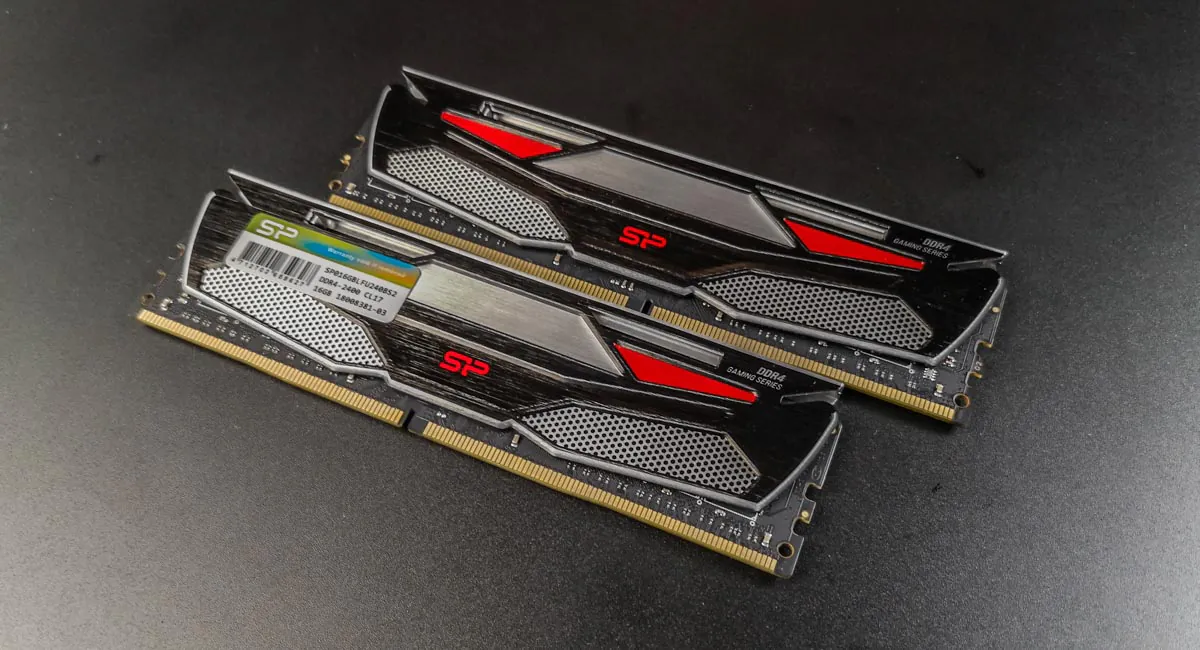
In his young years, Bill Gates allegedly said that “640 KB should be enough for everyone.” But it was a long time and also not true. Yes, there are games like .kkrieger, which occupy 96 KB, but where can you get enough of these? What I mean is that Silicon Power 2×16 GB 2400 MHz set in the current realities makes perfect financial sense.
In our area, the products of this manufacturer are a rare find. But in Asia people know it well, both by SSD and DRAM. By the way, we had a representative of Silicon Power on the review – in the form of a solid-state SATAIII drive, and we were pleased with it. Most of the questions regarding the DDR4 set is its price. Given the greatly reduced cost of RAM in general around the world, a 8 GB can be found for 1500 $40.
The set with the party number SP032GBLFU240BD2 is not available in the CIS, but single 4 GB modules (SP004GBLFU240NS2) are available for $ 6. The 32 GB kit was found on Amazon for $184. It’s a fair price, especially if you need volume, not performance.
The Silicon Power 2×16 GB delivery kit consists of a blister, two memory modules and glossy paper. Components that are more expensive than $150 delivered in blisters it something else. But considering that we are talking about the super-budget sector, I’ll let it slide.
The memory looks, well, cool. Black textolite with chips and stuff hidden under a fancy radiator shape. The front sticker with the characteristics, the back of the metal – partly with longitudinal polishing, partly with a hexagonal texture. With the exception of stickers, both sides of the radiator are the same.
The height of one plate with a radiator is 36 mm, which means much more better compatibility with cooling systems than in the case of GeIL EVO X ROG Certified and HILM modules.
According to the characteristics stated on the manufacturer’s website, Silicon Power 2×16 GB has a frequency of 2400 MHz and CAS CL17 timings. That means work in dual channel mode, if you buy a set of two modules. Full compatibility with AMD Ryzen of the first generation is not announced, AMD does not mention the set. In addition, there is no XMP support of any kind.
AMD Ryzen 7 1800X processor provided by Kiev-IT store. But at the time of testing the video card turned out to be nothing more than a 256 MB gag by NVIDIA NVS 295. Fortunately, this did not affect the test results.
Now – benchmarks. For the sake of interest, we shot the results in three frequencies, 1600 MHz (11-11-11-24-37), 2400 MHz (17-17-17-36-55) and 3166 MHz (18-22-22-47-72). Tests in games were conducted on the minimum graphics settings, for maximum CPU usage. And of course, in dual-channel mode of RAM.
The results are interesting. I am writing these lines, not knowing the results completely, because I downloaded the screenshots from three different folders without comparing them. In terms of synthetics, it was interesting to observe how neither FLOPS nor IOPS practically changes from a change in the read/write speed of the memory. CPU-Z is a similar story.
Progress was in PCMark 10 – an increase from 1600 MHz to 3133 MHz gave 8% more points. In WoT enCore, CS: GO and the increase was 29%, in Shadow of the Tomb Rider – 37%, and in Ashes of the Singularity in the benchmark with an emphasis on CPU – 44%.
The kit is interesting, both visually and by characteristics. Of course, it is far from the most powerful sets of RAM for overclocking, and there’s no backlighting, no A-XMP. But there is a radiator and a large volume, and the overclocking options are pleasant. And the small height of the modules allows you to install all the desired cooling systems.
Leave a Reply